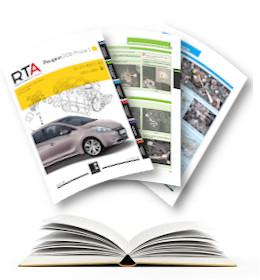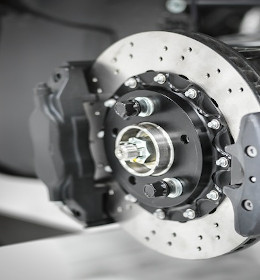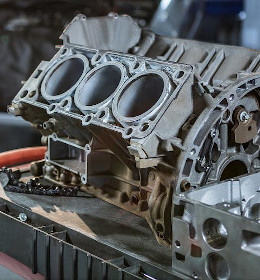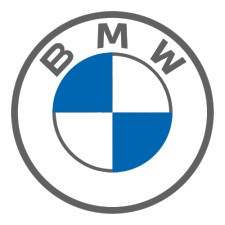Que signifie votre code Code Défaut BMW ?
Grace au système OBD, les
Bmw
fabriqués après 1996 sont normalement équipés d'une prise diagnostique OBD.
Si l'ordinateur de la voiture rencontre un problème,un code d'erreur ou un code de diagnostic (DTC)
sera stocké dans la mémoire de l'ECU de la voiture.
Avec un lecteur OBD branché sur le port OBD (On-Board Diagnostics) de la voiture, vous pouvez lire la liste des codes stockés, et donc découvrir quel est le problème.
Les codes suivent une formule permettant de savoir généralement quel est le problème avant même de regarder le tableau ci-dessous.
Nous vous présentons ci-dessus une liste très complète des différents codes défauts possibles.
Si le code défaut de votre auto s'affiche au tableau de bord, vous n'aurez peut-être même pas besoin d'un lecteur OBD . il sera dans la liste .
Réparer le code défaut de votre auto, c'est potentiellement simple à faire avec vos revues et méthodes techniques.

Réparer le code défaut de votre auto, c’est potentiellement simple à faire avec nos revues et méthodes techniques
| Code | Libellé |
|---|---|
| P1004 | VVL-Guiding Sensor Solenoid Loss (Bank 1) |
| P1005 | VVL-Guiding Sensor Reset Error (Bank 1) |
| P1006 | VVL-Guiding Sensor Parity Error (Bank 1) |
| P1007 | VVL-Guiding Sensor Gradient Error (Bank 1) |
| P100A | Fuel Rail/System Pressure - Too Low (Bank 2) |
| P100B | Fuel Rail/System Pressure - Too High (Bank 2) |
| P100E | VVL-Limp Home Request Air Mass Plausibility (Bank 2) |
| P100F | VVL-Overload Protection Control Motor Current Plausibility |
| P1012 | VVL-Reference Sensor Solenoid Loss (Bank 1) |
| P1013 | VVL-Reference Sensor Reset Error (Bank 1) |
| P1014 | VVL-Reference Sensor Parity Error (Bank 1) |
| P1015 | VVL-Reference Sensor Gradient Error (Bank 1) |
| P1016 | Fuel Volume Control Performance (Bank 1) |
| P1017 | VVL- Sensors Plausibility (Bank 1) |
| P1019 | VVL-Sensors Supply Voltage Circuit High (Bank 1) |
| P101B | VVL-Self-Learning Function Storage of Learning Values In EEPROM NotPossible |
| P101F | Ambient Air Temperature / Intake Air Temperature Correlation |
| P1029 | VVL-Actuator Monitoring Control Motor Temperature High (Bank 1) |
| P102A | O2 Sensor Heating, Heater Error (Bank 1 Sensor 1) |
| P102D | Camshaft Position Timing System Pressure Too Low |
| P102E | Fuel Rail/System Pressure Pulsation (Bank 1) |
| P102F | Fuel Rail/System Pressure Pulsation (Bank 2) |
| P1030 | VVL-Actuator Monitoring Position Control; Tight, no Adjustment possible (Bank 1) |
| P1031 | VVL-Actuator Monitoring Recognition of Direction of Rotation Plausibility (Bank 1) |
| P1032 | Fuel Volume Control Performance (Bank 2) |
| P103C | 'A' Camshaft Position Actuator Over Temperature (Bank 1) |
| P103D | 'A' Camshaft Position Actuator Over Temperature (Bank 2) |
| P103E | 'B' Camshaft Position Actuator Over Temperature (Bank 1) |
| P103F | 'B' Camshaft Position Actuator Over Temperature (Bank 2) |
| P1047 | VVL-Control Circuit High (Bank 1) |
| P1048 | VVL-Control Circuit Low (Bank 1) |
| P1049 | VVL-Control Circuit Engine Cables Short Circuit (Bank 1) |
| P104A | Camshaft Position Timing Pressure Accumulator Shutoff Valve ControlCircuit Low |
| P104B | Camshaft Position Timing Pressure Accumulator Shutoff Valve ControlCircuit High |
| P104C | Camshaft Position Timing Pressure Accumulator Shutoff Valve ControlCircuit/Open |
| P104D | Camshaft Position Timing Pressure Accumulator Shutoff Valve ControlCircuit Over Temperature |
| P1050 | VVL-Control Circuit (Bank 1) |
| P1051 | VVL-Control Circuit High (Bank 2) |
| P1052 | VVL-Control Circuit Low (Bank 2) |
| P1053 | VVL-Control Circuit Engine Cables Short Circuit (Bank 2) |
| P1054 | VVL-Control Circuit (Bank 2) |
| P1055 | VVL-Control Motor Supply Voltage Circuit High (Bank 1) |
| P1056 | VVL-Control Motor Supply Voltage Circuit Low (Bank 1) |
| P1057 | VVL-Control Motor Supply Voltage Circuit Electrical (Bank 1) |
| P1058 | VVL-Control Motor Supply Voltage Circuit High (Bank 2) |
| P1059 | VVL-Control Motor Supply Voltage Circuit Low (Bank 2) |
| P105C | VVL-Control Motor Tight |
| P1060 | VVL-Control Motor Supply Voltage Circuit Electrical (Bank 2) |
| P1062 | VVL-Limp Home Request Full Stroke Position not Reached (Bank 1) |
| P1064 | VVL-Value Comparison Starting Position/Parking Position Correlation(Bank 1) |
| P106D | H2-Rail Pressure Too High |
| P106E | H2-Rail Pressure Too Low |
| P106F | H2-Rail Pressure Sensor Circuit Low (Bank 1) |
| P107D | H2-Rail Pressure Sensor Circuit High (Bank 1) |
| P107E | H2-Rail Pressure Sensor Circuit Range/Performance |
| P1083 | Fuel control limit mixture too lean, bank 1 sensor 1 |
| P1084 | Fuel control limit mixture too rich, bank 1 sensor 1 |
| P1085 | Fuel control limit mixture too lean, bank 2 sensor 1 |
| P1086 | Fuel control limit mixture too rich, bank 2 sensor 1 |
| P1087 | Oxygen sensor in front of catalytic converter 1, slow response in the lean control range |
| P1088 | Oxygen sensor in front of catalytic converter 1, slow response in the rich control range |
| P1089 | Oxygen sensor behind catalytic converter 1, slow response in the lean control range |
| P1090 | System too lean (bank 1) |
| P1091 | System too rich (bank 1) |
| P1092 | System too lean (bank 2) |
| P1093 | System too rich (bank 2) |
| P1094 | Oxygen sensor in front of catalytic converter 2, slow response in the rich control range |
| P1095 | Oxygen sensor in front of catalytic converter 1, slow response |
| P1096 | Oxygen sensor in front of catalytic converter 2, circuit, slow response |
| P1097 | Oxygen sensor behind catalytic converter 1, slow response after coasting downhill fuel cut-off |
| P1098 | Oxygen sensor behind catalytic converter 2, slow response after coasting downhill fuel cut-off |
| P10A0 | H2-Rail Pressure Sensor Supply Voltage Circuit (Bank 1) |
| P10AB | Reductant level sensor 2 circuit |
| P10AC | Reductant level sensor 2 circuit range/performance |
| P10AD | Cold Start Intake Air Temperature Front Of Throttle Valve Too Low (Bank 1) |
| P10AE | Cold Start Intake Air Temperature Front Of Throttle Valve Too High(Bank 2) |
| P10B0 | Charge Air Cooler Temperature Too High (Bank 1) |
| P10B2 | Charge Air Cooler Temperature Too High (Bank 2) |
| P10BE | Injectors Open Circuit (Group 4) |
| P10C1 | Fuel Volume Regulator Safety Relay Control Circuit |
| P10C2 | Fuel Volume Regulator Safety Relay Control Circuit Low |
| P10C3 | Fuel Volume Regulator Safety Relay Control Circuit High |
| P10C7 | Internal Mass or Volume Air Flow Sensor 'A' Error |
| P10C8 | Internal Mass or Volume Air Flow Sensor 'B' Error |
| P10CE | Fuel Rail Pressure Sensor Votage Too High (Bank 1) |
| P10CF | Fuel Rail Pressure Sensor Votage Too Low (Bank 1) |
| P10D0 | Cold Start Charge Air Temperature Too High (Bank 1) |
| P10D1 | Cold Start Charge Air Temperature Too Low (Bank 1) |
| P10D3 | Cold Start Charge Air Temperature Too High (Bank 2) |
| P10D4 | Cold Start Engine Coolant Temperature Too Low |
| P10D5 | Cold Start Engine Coolant Temperature Too High |
| P10D9 | Fuel Rail Pressure Sensor Signal Stuck (Bank 1) |
| P10DC | Can Bus Hardware Defective |
| P10DD | FlexRay Hardware Defective |
| P10EA | Ambient Air Temperature Too High |
| P10EB | Ambient Air Temperature Too Low |
| P10ED | Fuel Rail Pressure Sensor Pressure High (Bank 1) |
| P10EE | Fuel Rail Pressure Sensor Pressure Low (Bank 1) |
| P10F2 | Charge Air Pressure in Comparison to Barometric Pressure Too High (Bank 1) |
| P10F3 | Charge Air Pressure in Comparison to Barometric Pressure Too Low (Bank 1) |
DEFINISSEZ VOTRE MARQUE POUR ACCEDER A VOS CODES DEFAUTS
-
Revue technique RTA

Revue Technique Automobile
La revue technique de référence depuis 1946. La RTA est une revue papier pour tous publics, qui vous permet d'effectuer les petites et les grosses réparations
 Voir le descriptif
Voir le descriptif
-
Entretien courant MTA

Méthode Technique Automobile
La MTA est issue de nos outils destinés aux pros de l'auto. Ces méthodes en ligne permettent d'effectuer les opérations de maintenances de votre auto (filtres, courroies, etc.)
 Voir le descriptif
Voir le descriptif
-
Toutes réparations MTAx

Méthode Technique Automobile Expert
La MTA expert est un outil en ligne destiné aux experts en mécanique et en carrosserie, pour effectuer tous types de réparations sur une voiture.
 Voir le descriptif
Voir le descriptif















